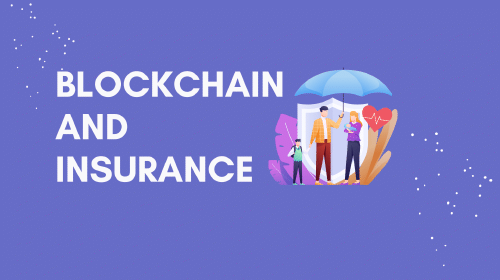Insider Threats in Cybersecurity: Types, Indicators & Preventive Measures
Salomon Kisters
Jun 20, 2023This post may contain affiliate links. If you use these links to buy something we may earn a commission. Thanks!
In today’s digital age, cybersecurity threats are becoming increasingly sophisticated and dangerous. Companies and organizations are constantly on the lookout for external threats, such as hackers and malware, but often overlook the hidden danger within their own walls.
Insider threats, which can come from employees, former employees, or even contractors, pose a significant risk to the security of sensitive information. These threats can come in many forms, such as stealing data, sharing confidential information, or introducing malicious software.
In this blog post, we will explore the various types of insider threats, their potential impact on businesses, and strategies to prevent and mitigate these risks.
What are Insider Threats and Why Are They Dangerous?
Insider threats are security risks that originate within a company or organization. These threats can come from current or former employees, contractors, or other people who have access to the organization’s sensitive data and systems. The danger of insider threats lies in the fact that they often have legitimate access to the information they are targeting, and they already know the organization’s security protocols.
Insider threats can take many forms, ranging from unintentional mistakes to intentional acts of malice. Some examples of insider threats include employees stealing customer data to sell on the dark web, sharing confidential company information with a competitor, or intentionally introducing malware into the organization’s systems.
Insider threats can be particularly dangerous because they are often difficult to detect. Employees who are planning to steal data or introduce malware may build up their activities gradually over an extended period to avoid raising suspicions. They may also work to cover their tracks, making it challenging to identify the source of the breach.
The impact of insider threats can be severe, leading to lost revenue, damaged reputations, and legal liabilities. In extreme cases, insider threats can even lead to the collapse of an entire organization. Therefore, companies must take the issue of insider threats seriously and develop robust strategies to prevent and mitigate these risks.
Types of Insider Threats - Malicious and Accidental
Insider threats can be broadly classified into two categories: malicious and accidental.
Malicious insider threats involve intentional attempts by employees to steal or compromise sensitive information or damage the organization’s IT infrastructure. This could be due to a variety of reasons, including financial gains, personal vendettas or even espionage. Malicious insider threats can result in severe damage to the organization’s reputation and financial loss.
Accidental insider threats, on the other hand, are non-malicious incidents that result in security breaches due to negligence or lack of awareness. For example, an employee could accidentally leave a company laptop unattended in a public place, leading to the theft of sensitive data. Accidental insider threats are more common than malicious insiders and can be prevented through employee training and awareness programs.
Both malicious and accidental insider threats can have significant consequences for the organization, and thus, must be addressed through a comprehensive insider threat management program. This should include regular employee training, implementing security protocols and access controls, and closely monitoring employee activities that may indicate a malicious insider threat.
Indicators of an Insider Threat
Effective detection of insider threats is critical for organizations to prevent or minimize the potential damage caused by such incidents. Here are some of the indicators that organizations can look for to detect an insider threat:
1. Abnormal User Behavior
Employees who access sensitive information outside of their normal working hours or try to access information unrelated to their job responsibilities can be a potential insider threat.
2. Frequent Access to Sensitive Information
Employees who access and download a large volume of sensitive data can pose a threat to the organization. Monitoring access to sensitive data should be done regularly to detect any unusual activity.
3. Change in Work Habits
An employee who suddenly starts to work outside of normal working hours, especially without any official justification, could be a sign of malicious intent. Such employees may be trying to avoid detection while exfiltrating sensitive data.
4. Financial Trouble
Employees experiencing financial instability, such as personal debt, can be more susceptible to insider threats. Financial stress and personal gain are common motivators for malicious insider threats.
5. Social Engineering
Inadequate security protocols and employee awareness make organizations vulnerable to social engineering attacks. Phishing attacks aimed at stealing user login credentials to access sensitive data is a common social engineering tactic.
Preventive Measures to Mitigate Insider Threats
Prevention is always better than cure. Organizations can take several preventive measures to minimize the risk of insider threats.
1. Access Control
One of the most effective ways to mitigate insider threats is to limit access to sensitive information. Access control policies can be implemented to ensure that employees only have access to the data that is necessary for their job responsibilities.
2. Two-Factor Authentication
Implementing two-factor authentication can add an additional layer of security to user login credentials. This can make it more difficult for malicious insiders to gain unauthorized access to sensitive information.
3. Regular Audits
Regular security audits can help organizations identify any potential vulnerabilities in their security systems. This can help prevent insider threats before they occur.
4. Reporting Mechanisms
Organizations should provide employees with a confidential reporting mechanism to report any suspicious activity. This can enable organizations to detect insider threats early.
5. Employee Training
Regular employee training and awareness programs can equip employees with the knowledge and skills to recognize and report suspicious activity. This can help prevent insider threats before they cause damage.
Continuous Monitoring and Response
While preventive measures can help minimize the risk of insider threats, they may not always be foolproof. Organizations should implement continuous monitoring and response mechanisms to detect insider threats that may have slipped through the cracks of preventive measures.
Continuous monitoring involves active and ongoing monitoring of security systems to detect any suspicious activity. This can be achieved through the use of security information and event management (SIEM) tools, which can detect patterns of behavior that fall outside the normal range of activities.
In addition to monitoring, organizations should also have a response plan in place to quickly mitigate any potential insider threats. This can include revoking access to sensitive information, conducting an investigation, and taking appropriate legal action if necessary.
Continuous monitoring and response mechanisms can help organizations detect and respond to insider threats in a timely manner, minimizing the potential damage that the threats can cause.
It is important for organizations to view cybersecurity as an ongoing process rather than a one-time fix, and to continuously improve their security systems to stay ahead of evolving threats.
Conclusion
Insider threats pose a hidden danger in cybersecurity, as they often go unnoticed until it’s too late.
These threats can come from employees, contractors, or even partners who have access to sensitive information and systems. While organizations may trust their employees and partners, it’s important to remember that people are fallible and can make mistakes.
It’s crucial for organizations to take insider threats seriously and implement preventative measures, such as access controls and employee training. However, these measures may not always be enough, which is why continuous monitoring and response mechanisms are essential. Organizations should have a plan in place to detect insider threats and respond quickly to minimize the potential damage.
Ignoring insider threats can have serious consequences, including loss of intellectual property, financial damage, and reputational harm. By taking a proactive approach and staying vigilant, organizations can better protect themselves against these hidden dangers and maintain their cybersecurity postu
Stay informed with the latest insights in Crypto, Blockchain, and Cyber-Security! Subscribe to our newsletter now to receive exclusive updates, expert analyses, and current developments directly to your inbox. Don't miss the opportunity to expand your knowledge and stay up-to-date.
Love what you're reading? Subscribe for top stories in Crypto, Blockchain, and Cyber-Security. Stay informed with exclusive updates.
Please note that the Content may have been generated with the Help of AI. The editorial content of OriginStamp AG does not constitute a recommendation for investment or purchase advice. In principle, an investment can also lead to a total loss. Therefore, please seek advice before making an investment decision.

Blockchain Full Nodes: Functions, Types, and More | OriginStamp
Learn about blockchain full nodes, their functions, types, and more. Discover how full nodes store complete blockchain data and perform various tasks.

Polkadot: Decentralized Web Protocol and Advanced Features Explained
Learn about Polkadot, a decentralized web protocol and blockchain with advanced features designed by Gavin Wood. Explore how Polkadot works and its unique advantages.

The State of Blockchain in the Insurance Industry: How Trustable Transactions, Enhanced Transparency, and Automation Can Disrupt Everything
Blockchain technology is set to radically disrupt traditional insurance. Read more about Trustable transactions, enhanced transparency, and automation.
Protect your documents
Your gateway to unforgeable data. Imprint the authenticity of your information with our blockchain timestamp